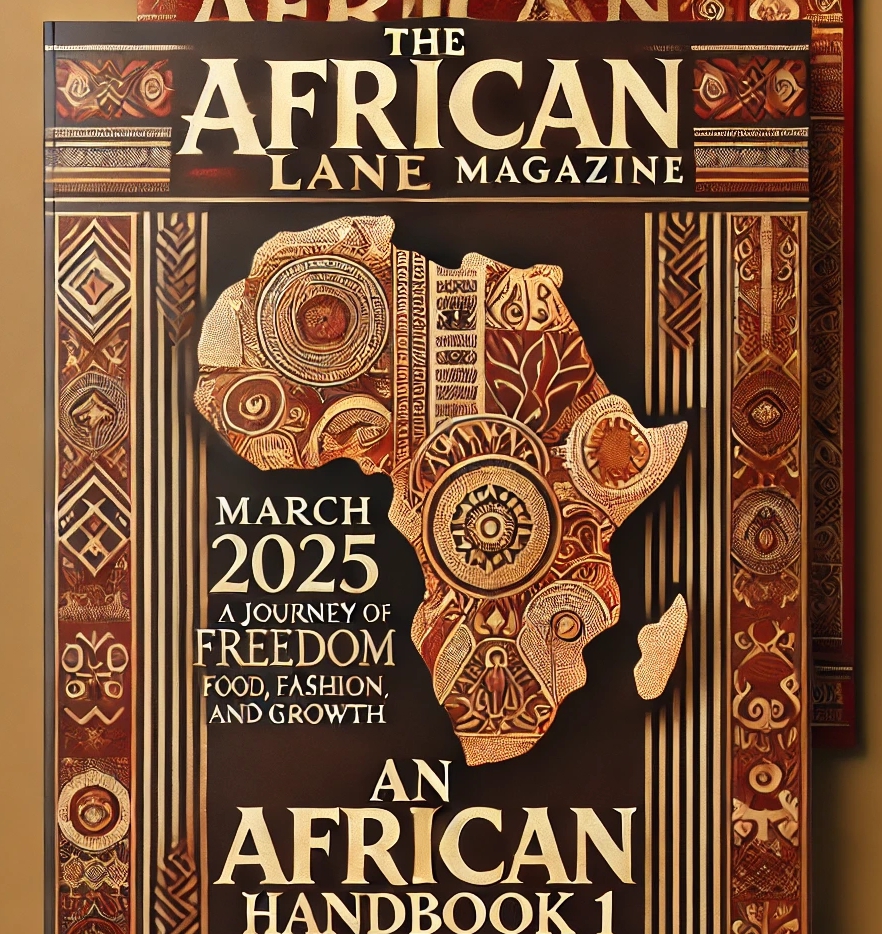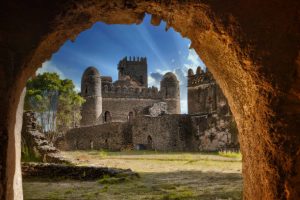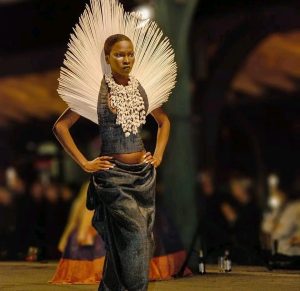Rwanda: The land of a thousand hills

Rwanda, landlocked republic lying south of the Equator in east-central Africa. Known for its breathtaking scenery, Rwanda is often referred to as le pays des mille collines (French: “land of a thousand hills”). The capital is Kigali, located in the centre of the country on the Ruganwa River.
The landscape is reminiscent of a tropical Switzerland. Its dominant feature is a chain of mountains of rugged beauty that runs on a north-south axis and forms part of the Congo-Nile divide. From the volcanoes of the Virunga (Birunga) Mountains in the northwest—where the Karisimbi reaches 14,787 feet (4,507 metres)—the elevation drops to 4,000 feet (1,220 metres) in the swampy Kagera (Akagera) River valley in the east. The interior highlands consist of rolling hills and valleys, yielding to a low-lying depression west of the Congo-Nile divide along the shores of Lake Kivu.
Name: Republic of Rwanda
President: Paul Kagame (2000)
Prime Minister: Anastase Murekezi (2014)
Land area: 9,633 sq mi (24,949 sq km); total area: 10,169 sq mi (26,338 sq km)
Population (2014 est.): 12,37,138
(growth rate: 2.63%); birth rate: 34.61/1000; infant mortality rate: 59.59/1000; life expectancy: 59.26
Capital and largest city (2011 est.): Kigali, 1.004 million
Currency: Rwanda franc
National name: Repubulika y’u Rwanda
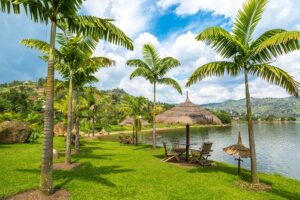
Languages: Kinyarwanda, French, and English (all official); Kiswahili in commercial centers
Ethnicity/race: Hutu 84%, Tutsi 15%, Twa (Pygmoid) 1%
Religions: Roman Catholic 49.5%, Protestant 39.4%, Islam 1.8%, indigenous beliefs 0.1%, none 3.6%, other 0.6% (2002)
Literacy rate: 71.1% (2010 est.)
Economic summary: GDP/PPP: $16.37 billion (2013 est.); per capita $1,500. Realgrowth rate: 7.5%. Inflation: 5.9%. Unemployment: n.a. Arable land: 46.32%.
Agriculture: coffee, tea, pyrethrum (insecticide made from chrysanthemums), bananas, beans, sorghum, potatoes; livestock.
Labor force: 4.446 million (2007); agriculture 90%, industry and services 10% (2000).
Industries: cement, agricultural products, small-scale beverages, soap, furniture, shoes, plastic goods, textiles, cigarettes.
Natural resources: gold, cassiterite (tin ore), wolframite (tungsten ore), methane, hydropower, arable land. Exports: $538.3 million (2013 est.): coffee, tea, hides, tin ore.
Imports: $1.937 billion (2013 est.): foodstuffs, machinery and equipment, steel, petroleum products, cement and construction material.
Major trading partners: Kenya, Democratic Republic of the Congo, China, Swaziland, US, Uganda, UAE, Tanzania, Malaysia, India, Belgium, Canada (2012).
Communications: Telephones: main lines in use: 44,400 (2012); mobile cellular: 5.69 million (2012).
Broadcast media: government owns and operates the only TV station; government-owned and operated Radio Rwanda has a national reach; 9 private radio stations; transmissions of multiple international broadcasters are available (2007).
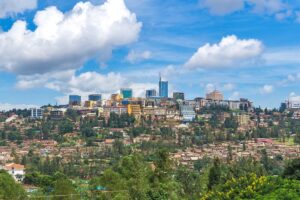
Internet Service Providers (ISPs): 1,447 (2012). Internet users:450,000 (2009).
Transportation: Railways: 0 km. Highways: total: total: 4,700 km paved: 1,207 km unpaved: 3,493 km (2012).
Waterways: Lac Kivu navigable by shallow-draft barges and native craft.
Ports and harbors: Cyangugu, Gisenyi, Kibuye.
Background
The population is young and predominantly rural. Rwandans are drawn from just one cultural and linguistic group, the Banyarwanda. However, within this group there are three subgroups:
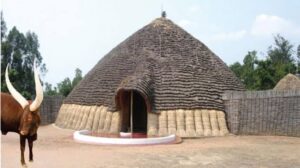
the Hutu, Tutsi and Twa. The Twa are a forest-dwelling pygmy people and are often considered descendants of Rwanda’s earliest inhabitants. Scholars disagree on the origins of and differences between the Hutu and Tutsi; some believe differences are derived from former social castes within a single people, while others believe the Hutu and Tutsi arrived in the country separately, and from different locations.
Christianity is the largest religion in the country; the principal language is Kinyarwanda, spoken by most Rwandans, with English and French serving as additional official languages. The sovereign state of Rwanda has a presidential system of government. The president is Paul Kagame of the Rwandan Patriotic Front (RPF), who has served continuously since 2000. Today, Rwanda has low levels of corruption compared with neighbouring countries, although human rights organisations report suppression of opposition groups, intimidation and restrictions on freedom of speech. The country has been governed by a strict administrative hierarchy since precolonial times; there are five provinces delineated by borders drawn in 2006. Rwanda is one of only three countries in the world with a female majority in the national parliament, the two other countries being Bolivia and Cuba.
Hunter-gatherers settled the territory in the Stone and Iron Ages, followed later by Bantu peoples. The population coalesced first into clans and then into kingdoms. The Kingdom of Rwanda dominated from the mid-eighteenth century, with the Tutsi kings conquering others militarily, centralising power and later enacting anti-Hutu policies. Germany colonised Rwanda in 1884 as part of German East Africa, followed by Belgium, which invaded in 1916 during World War I. Both European nations ruled through the kings and perpetuated a pro-Tutsi policy. The Hutu population revolted in 1959. They massacred numerous Tutsi and ultimately established an independent, Hutu-dominated republic in 1962. A 1973 military coup saw a change of leadership, but the pro-Hutu policy remained. The Tutsi-led Rwandan Patriotic Front launched a civil war in 1990. The presidents of Rwanda and Burundi, both Hutus, were killed when their aircraft was shot down on 6 April 1994. Social tensions erupted in the 1994 genocide that followed, in which Hutu extremists killed an estimated 500,000–1,000,000 Tutsi and moderate Hutu. The RPF ended the genocide with a military victory.
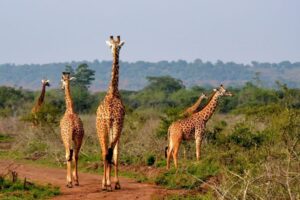
Rwanda’s developing economy suffered heavily in the wake of the 1994 genocide, but has since strengthened. The economy is based mostly on subsistence agriculture. Coffee and tea are the major cash crops for export. Tourism is a fast-growing sector and is now the country’s leading foreign exchange earner. Rwanda is one of only two countries in which mountain gorillas can be visited safely, and visitors pay high prices for gorilla tracking permits. Music and dance are an integral part of Rwandan culture, particularly drums and the highly choreographed intore dance. Traditional arts and crafts are produced throughout the country, including imigongo, a unique cow dung art.
Rwanda has been governed as a unitary presidential system with a bicameral parliament ruled by the Rwandan Patriotic Front since 1994. The country is member of the African Union, the United Nations, the Commonwealth of Nations, COMESA, OIF and the East African Community.
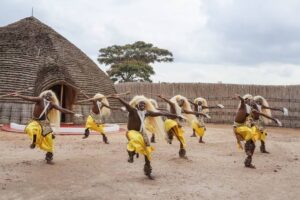
Culture:
Rwanda is a country of mainly three groups of people these are the Hutu, Tutsi, and the Twa. The Hutu dominates other groups with over 84%, the Tutsi with 15% and the Twa 1%. The culture of Rwanda is varied. Unlike many countries in Africa, Rwanda has been a unified state since pre-colonial times, populated by the Banyarwanda people who share a single language and cultural heritage. Music and dance are an essential part of Rwandan ceremonies, celebration, social gatherings and storytelling.
The most well-known traditional dance is the umushagiriro, or cow dance, performed by women, the or dance of heroes, performed by men, and the drumming, also traditionally performed by men, on drums known as ingoma. Music is transmitted orally, with styles varying between the social groups. Rwanda’s most known dance group is the National Ballet, and this dance was acknowledged by President Habyarimana in 1974, and it’s majorly performed during the nationally and internationally tradition, music is conveyed orally, with styles varying between the social groups.
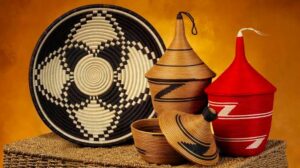
Drums are of great importance; the royal drummers enjoyed high status within the court of the King (MwamiDrummers and the dance is usually played between seven and nine in number. Although the country has a growing popular music industry with very many musicians most of them are influenced by East African, Congolese, and American music. The most popular genre is hip hop, with a blend of rap, ragga, R&B and dance-pop.
1st Image: Lake Kivu. The 2,700-square-kilometer, emerald-green oasis, surrounded by misty mountains, is Rwanda’s largest lakeVolcanoes National park gives any visitor a true taste of primate trekking activities, mountaineering experience, birding adventure, jaw-dropping sceneries and unforgettable African savannah encounters.
Sources: Wikipedia, Britannica, https://www.aboutrwanda.com/rwandas-culture-and-people/
